A delightful marriage of interesting textures, distinct colour palettes and gorgeous greenery, Bismarck House is not your ordinary Bondi home.
The site is situated on the road that leads straight to Bondi Beach, which is home to an eclectic mix of shops and cafes. Though the coastal suburb is renowned for its beautiful geography, it houses clusters of homes that are of poor-quality building stock. Sadly, the semi-detached Federation home that originally stood on the site was one of them.
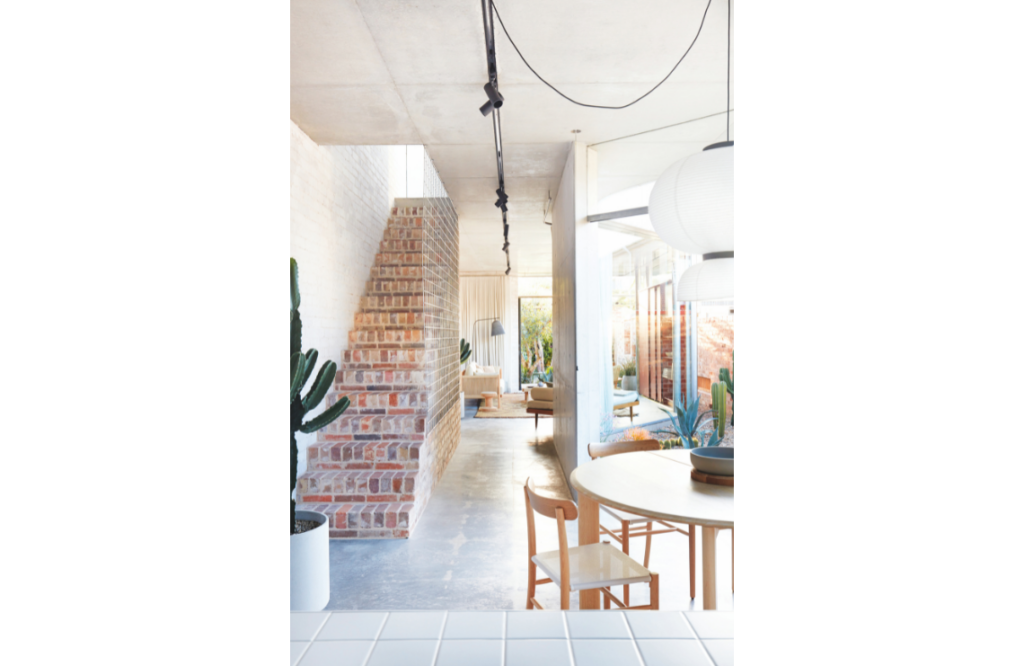
Bismarck House was designed and built to showcase the ways design thinking can reinvigorate Bondi’s residential streets. The client brought Andrew Burges Architects, interior consultants David Harrison & Karen McCartney, and Robert Plumb Build together at the onset of the project, and the rest is history. Though Bismarck House is an Airbnb rental property at present, it will likely become the client’s city home if the family makes the call to move to the country in a few years’ time. It was therefore designed to embody a functional family home while exuding a luxe coastal vacay feel.
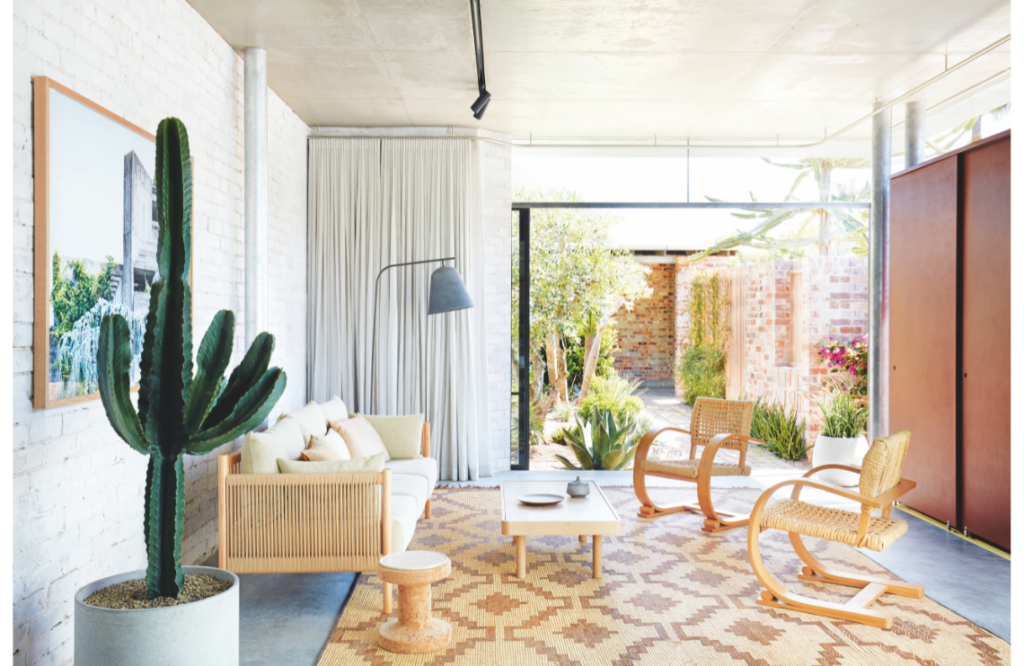
The home’s integral continual garden concept is no coincidence. The client — Will Dangar of Dangar Barin Smith — is a landscape designer by trade and was eager to showcase his company’s landscaping prowess through this project. He worked closely with the project team to design and install the lush landscape components that shape the soul of this home. The garden itself was intended to be both beautiful and hardy from the get go. The team overlooked a traditional garden in favour of gravel, natives and succulents, and the main bedroom is sheltered from the harsh westerly sun with a little help from the raised garden bed that houses a beautiful array of succulents.

“The inspiration for the garden started with the mature euphorbia tree, which is the large cactus planted outside the wall in the lane,” notes Will. “It was here from day one, so we kept it, and the succulent theme came from it.” Two mature olive trees bridge the main house and the apartment at the front of the property, and lush succulents populate the internal courtyard. The continuous garden concept aided the project team in maximising the perception of space within the site, while also creating a framework for organising the home’s spaces and the materials used within.
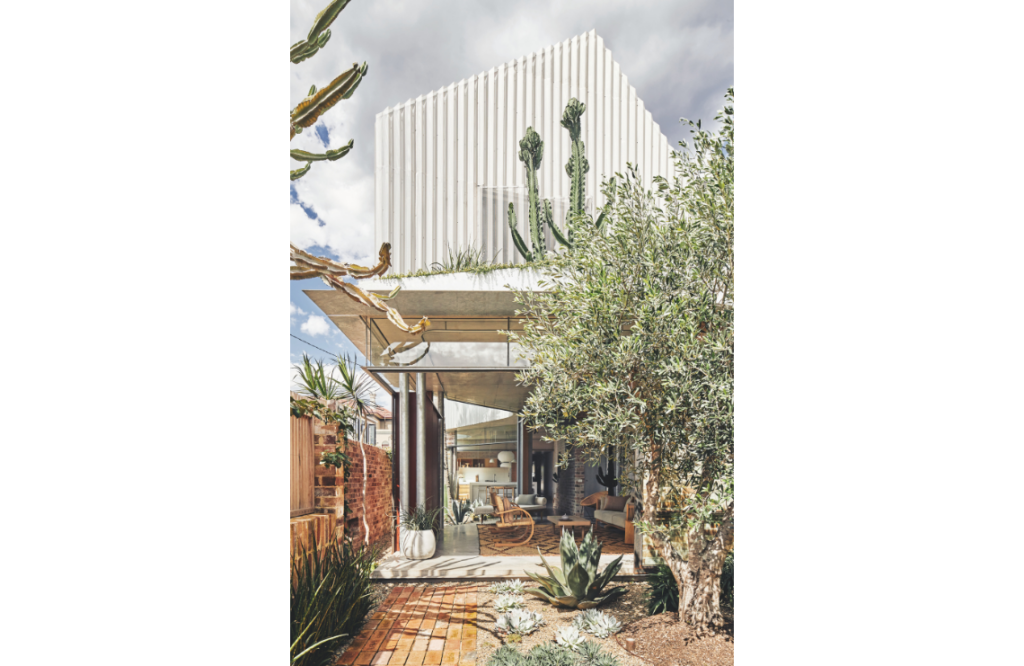
“The internal footprint is restrained as far as possible to enable a continuous garden to run along and between rooms,” says architect Andrew Burges. Keeping in line with the garden concept, the ground level, which houses the kitchen, dining and living spaces, the laundry and a guest WC, consists of raw, natural materials and hues that are typically found in outdoor settings. A wander through this level will have you admiring the tiled kitchen, timber window seat, brick stairs, mesh balustrade, face-brick and mortar-washed walls and concrete floors. The kitchen is oriented to catch the sun and allow natural light to permeate the space. The garden courtyard nearby frames the laneway entry and can be admired from both the kitchen and the living area.

“For the upper level, we used a lighter but more monolithic palette,” Andrew shares. “The exterior is defined by a screen in perforated aluminium sheet — a standard perforated sheet ordered off the shelf in mill-finish aluminium.” This level, which is home to the main bedroom and ensuite, two additional bedrooms, one bathroom and plenty of storage space, boasts a floating monolithic quality thanks to the clever use of the pleated sheet. Proyalbi, which is a fine-set plaster applied to the walls and ceilings, combines with concrete floors and gal-steel handrails to create a tight colour palette and abstract feel.
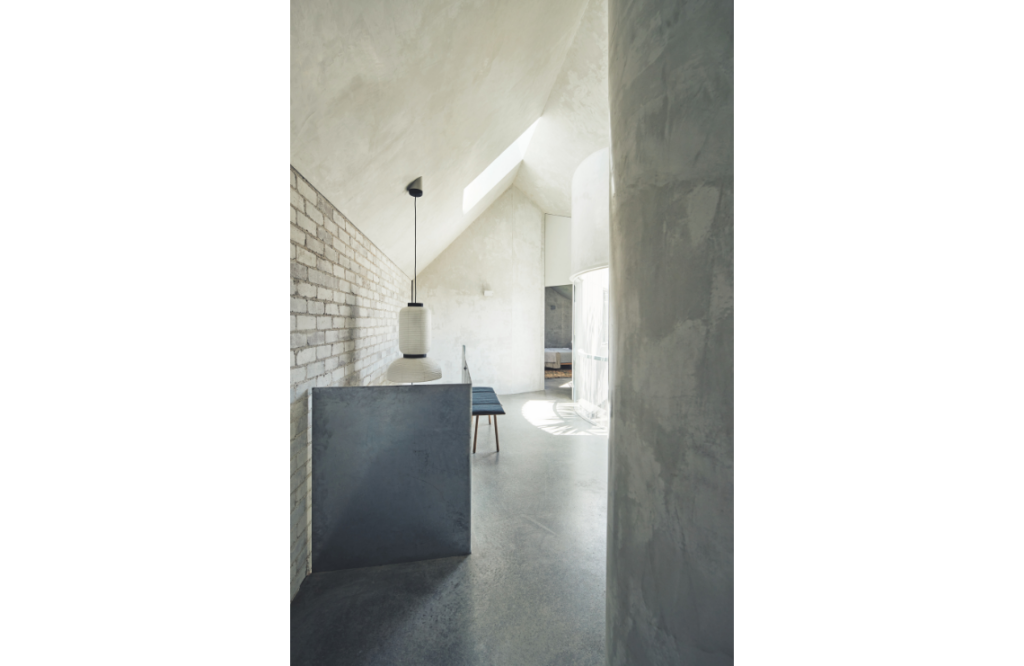
Though modest in nature, the ground-level apartment is a design marvel. The space, which encompasses a combined kitchen, dining and living area plus a bathroom and a wall bed, resembles the main house in some ways but commands attention to its unique personality as well. The use of natural materials has been extended to this semi-detached apartment, and timber accents and floor-to-ceiling windows facilitate warmth and brightness unusual for smaller spaces.
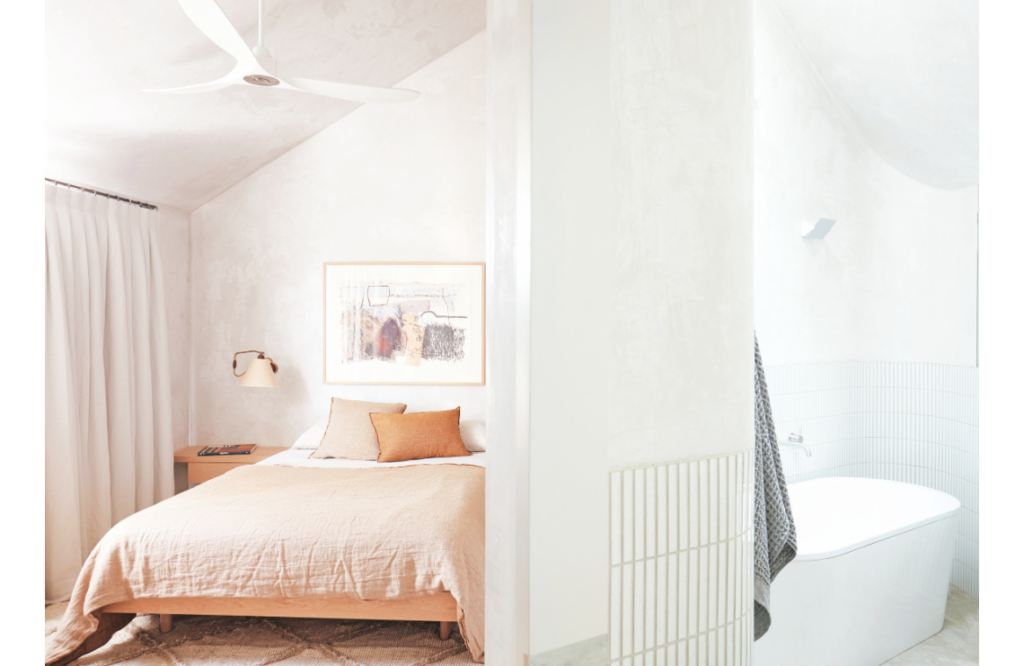
The grounded collaboration between ABA and Design Daily paved the way for the home’s fixtures, fittings, joinery and furnishings to create a cohesive ambience. The clients were involved in the process of selecting furnishings, floor coverings and artwork, thereby injecting some personal touches into what will likely become a future family home.
Though choosing one favourite aspect of this experimental design might be difficult, the clients are particularly drawn to the areas around the open-plan kitchen — perhaps because of the way the well-placed skylight captures and disperses light throughout the space while presenting views of blue skies and the majestic Bismarck palm onsite. The kitchen bench window adds to the sophisticated charm of the area, and the custom sliding window screen is an ingenious way for the family and their guests to experience the hustle and bustle of the lively laneway without setting foot outside the house.
“They say it feels like an urban oasis as the line between inside and out blurs to create that perfect Sydney summer experience,” says Andrew. It’s easy to imagine this abode receiving a five-star rating from the clients and their guests alike.



























